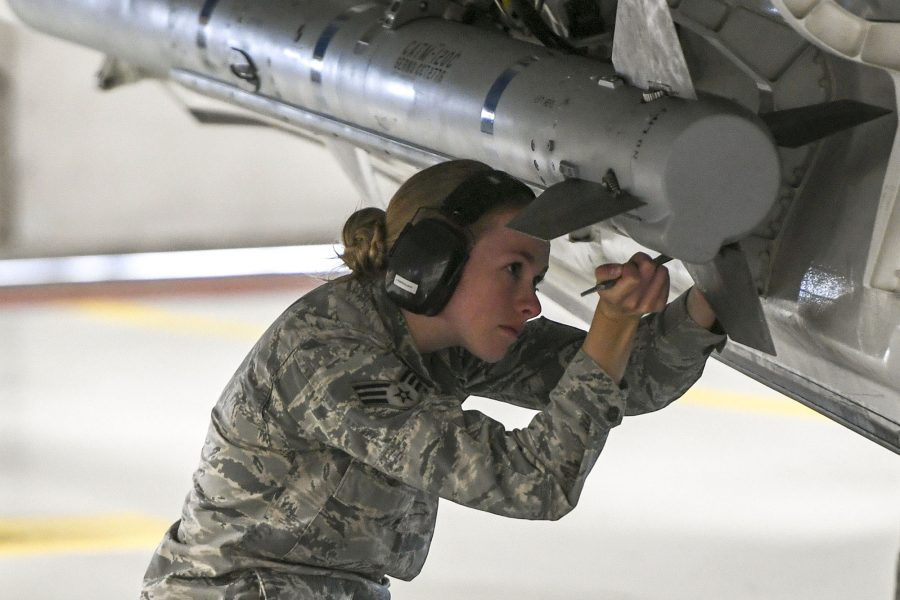The range of current Air Force weapons compels pilots of stealth aircraft to get too close to their targets, risking that they’ll be seen and shot down, Air Combat Command boss Gen. Mark D. Kelly said Sep. 22. The service must have longer-range “fifth-generation weapons” to go with its fifth-gen combat aircraft, he said.
“We [take] a lot of bang out of our low-observable force because we push them into ranges where everyone”—even stealth aircraft—“is observable,” Kelly told reporters during a press roundtable at AFA’s Air, Space & Cyber Conference. That means “we’re not going to get a good return on our investment” in fifth-gen or better fighters. Fifth-generation weapons “allow us more range, whether it’s new air-to-air or air-to-ground,” he said. The Air Force considers its F-22, F-35, and B-2 bombers to be “fifth generation” systems.
“I’m happy if it moves fast,” he said, because “any time we pull the trigger … we have to assume the target’s going to move between the time [the weapon] leaves the rail and the time it shows up at the target. And hypersonics and closer range shorten that time of flight.”
But, “it’s not exclusively hypersonics. We just have to make sure we can reach out and touch folks at a range that is equal to or exceeds their ability to reach out and touch us.”
The longest-range dogfight weapon in USAF’s inventory is the AIM-120 Advanced Medium Range Air-to-Air Missile, which Kelly noted goes back more than 25 years.
“The AIM-120 we have today is significantly improved, in all fairness,” he admitted, “but we’ve squeezed most all we can out of that capability.”
The People’s Republic of China Army Air Forces already field an AMRAAM-like weapon, the PL-15, with much longer range than AMRAAM, negating much of USAF’s so-called “first look, first shot” advantage. That prompted the Air Force to pursue the AIM-260 Joint Advanced Tactical Missile, a new dogfight weapon.
The AIM-260 “gets us there” in terms of range, Kelly said.
The Air Force needs to take an “enterprise-wide solution” to its weapons, Kelly said. Not doing so poses the “greatest risk to the fighter force.”
Kelly explained that “when we field any kind of capability, it has to be an enterprise-wide solution. And so … if you field a fifth-gen asset—a fighter, bomber, ISR, etc.—and you don’t have fifth-gen sustainment, and you don’t have fifth-gen Airborne Moving Target Capability, and you don’t have fifth-gen weapons with it, that rate-limits the capability of that weapon system. It just does.”
The AIM-260 isn’t the end solution to air dominance, though, Kelly said.
“We can’t take our eyes off the follow-on capability,” he insisted. “Our adversaries do not sequentially develop and design weapons.” While China is developing a near-term weapon, work is already well underway on “multiple lines” of potential successors, Kelly said.
“We can’t, sequentially, heel to toe, start working on solving Problem A and not even eyeball Problem B. We’ve got to keep looking forward,” he said.
